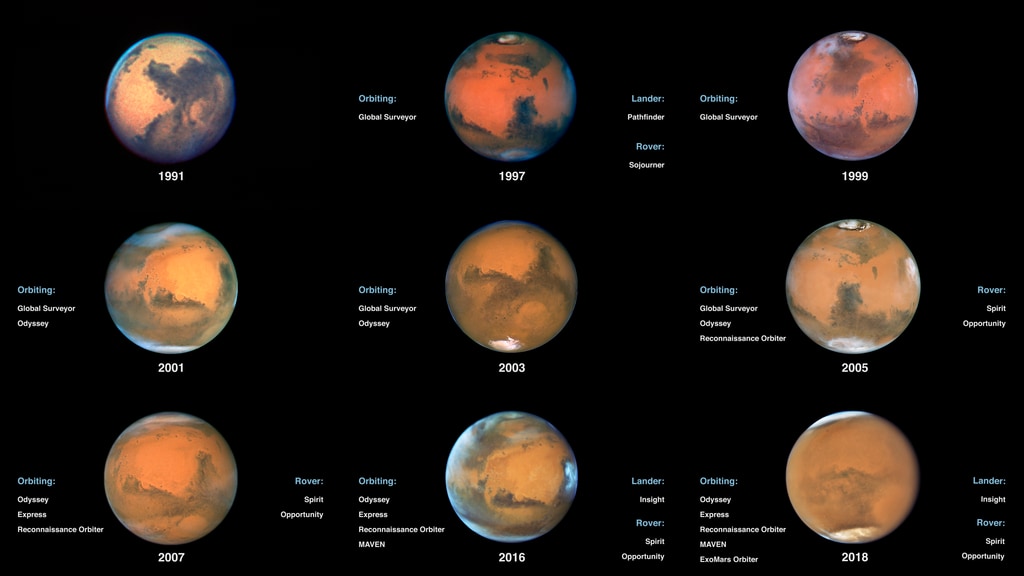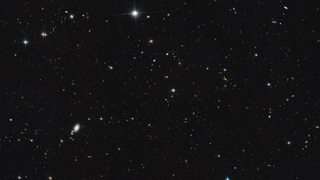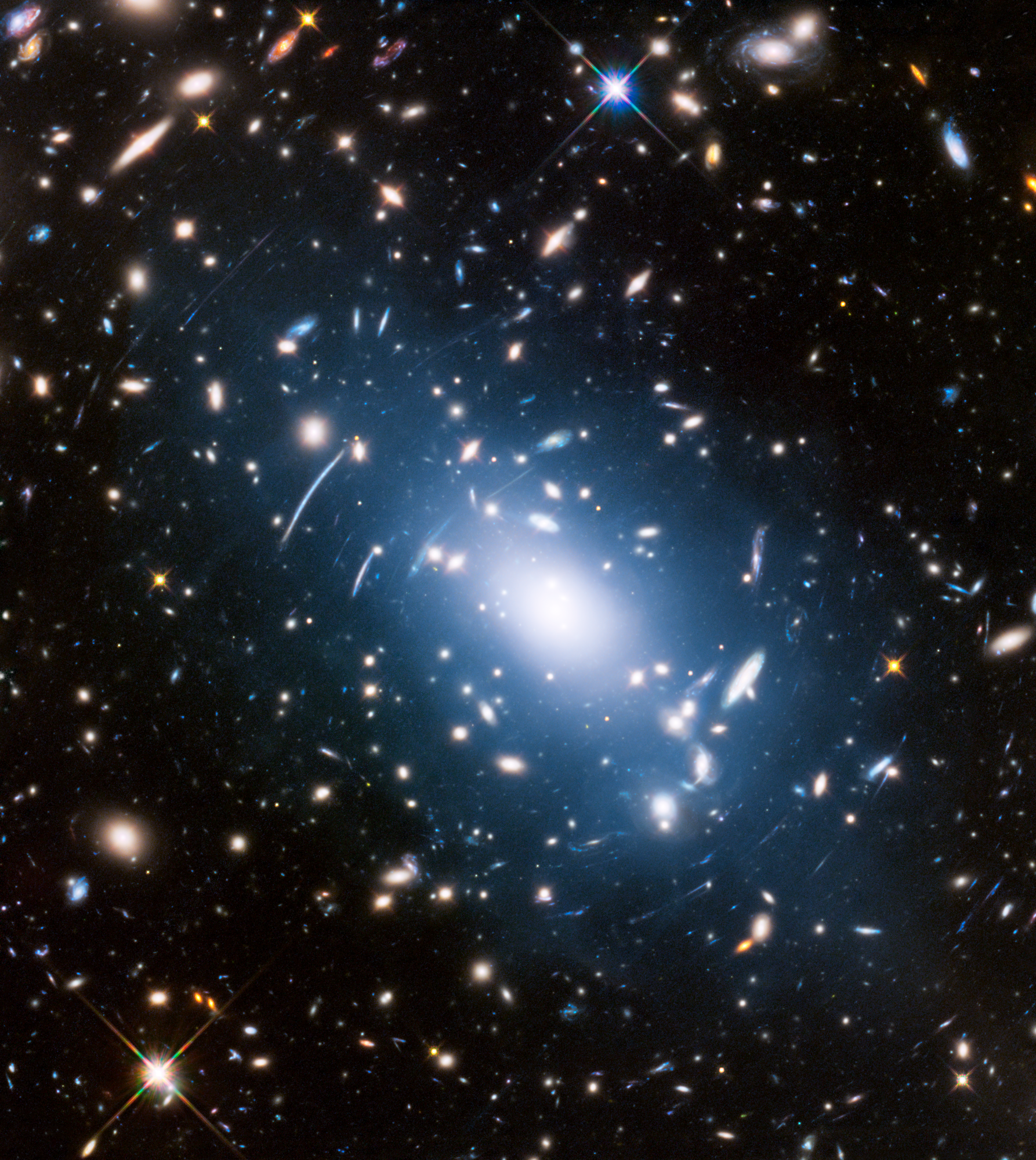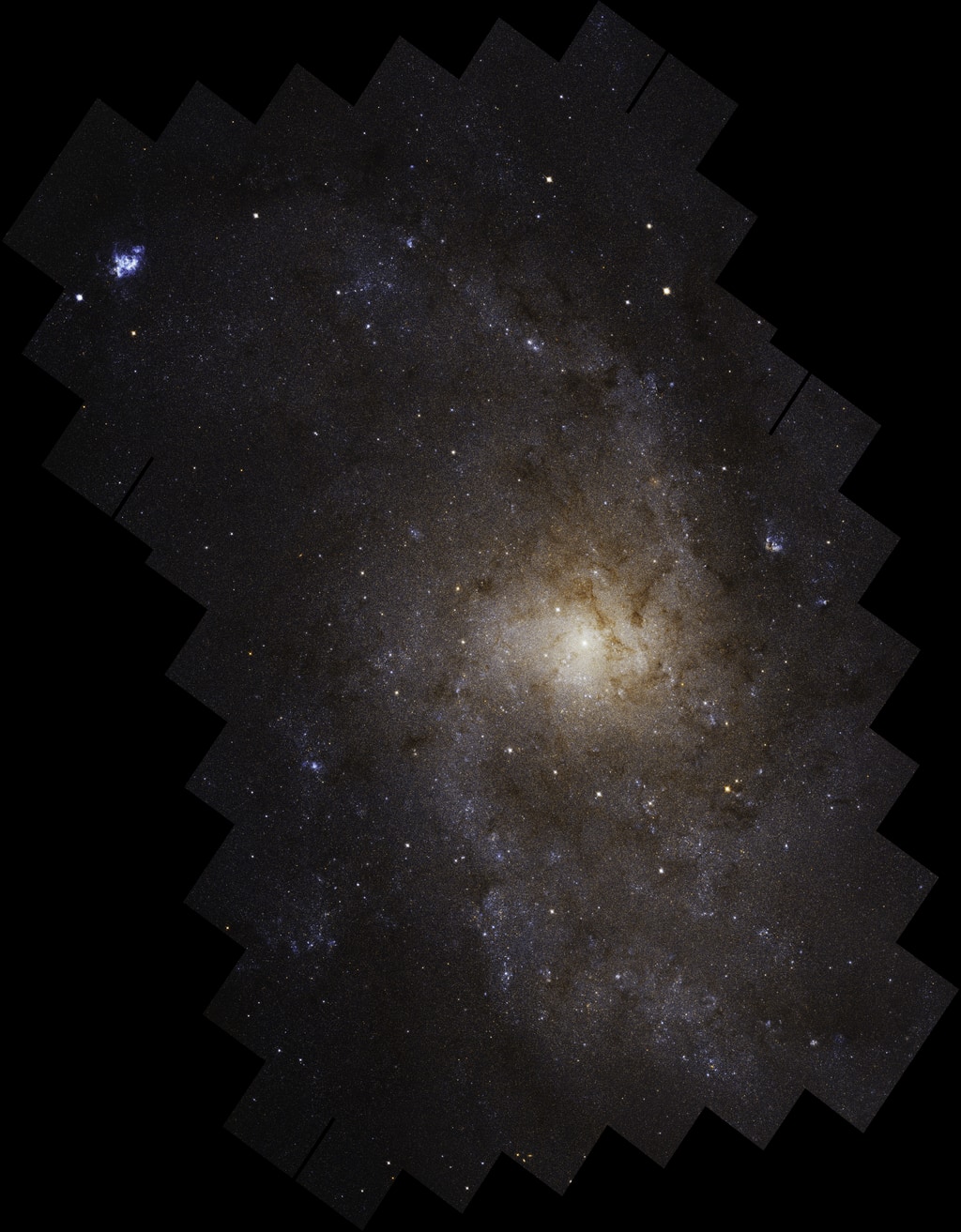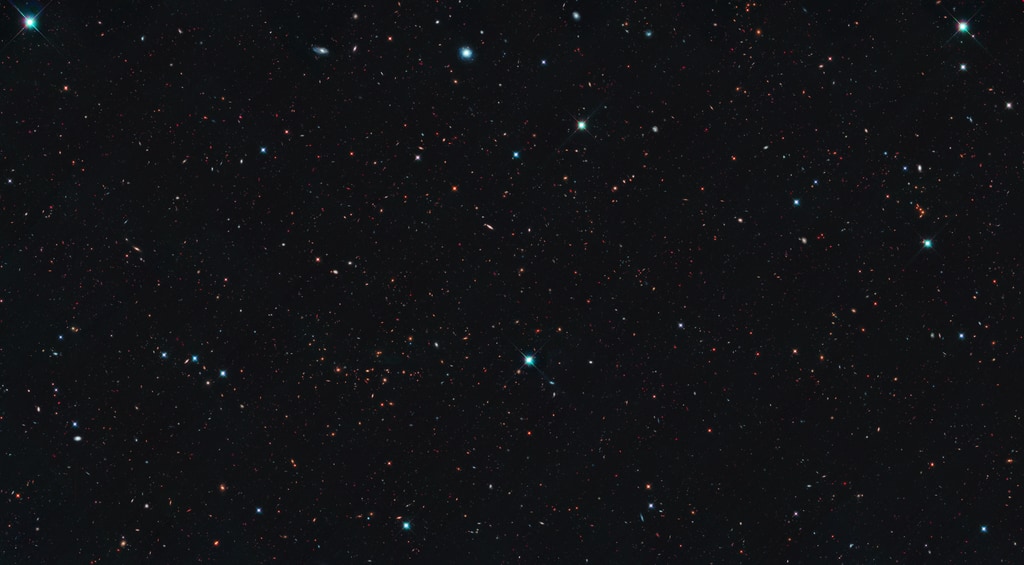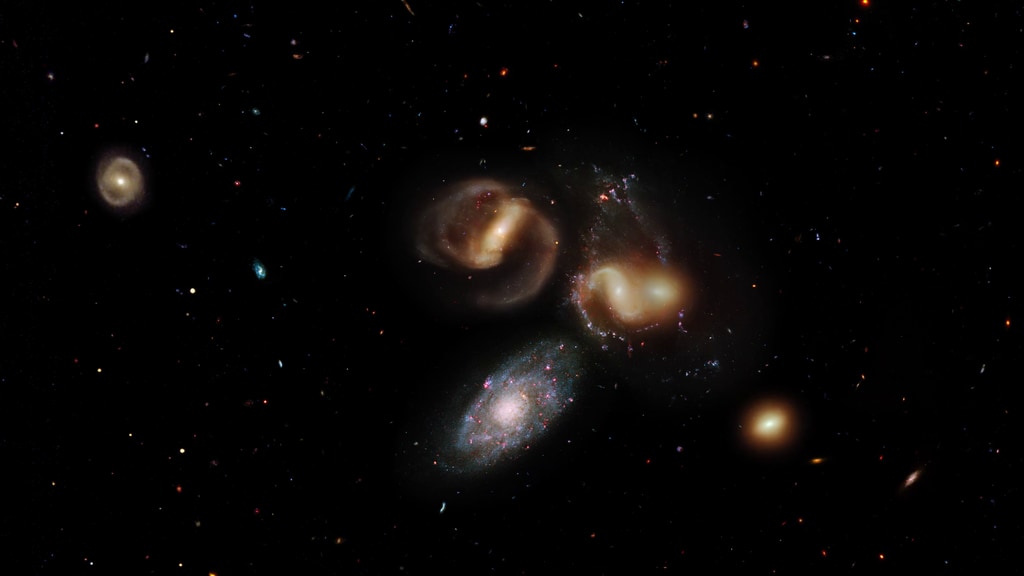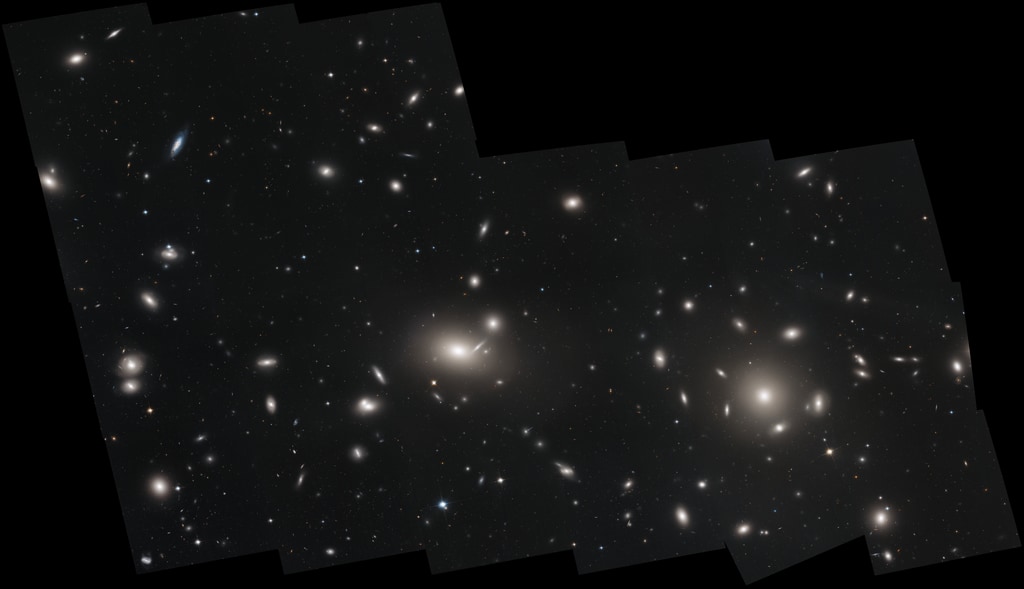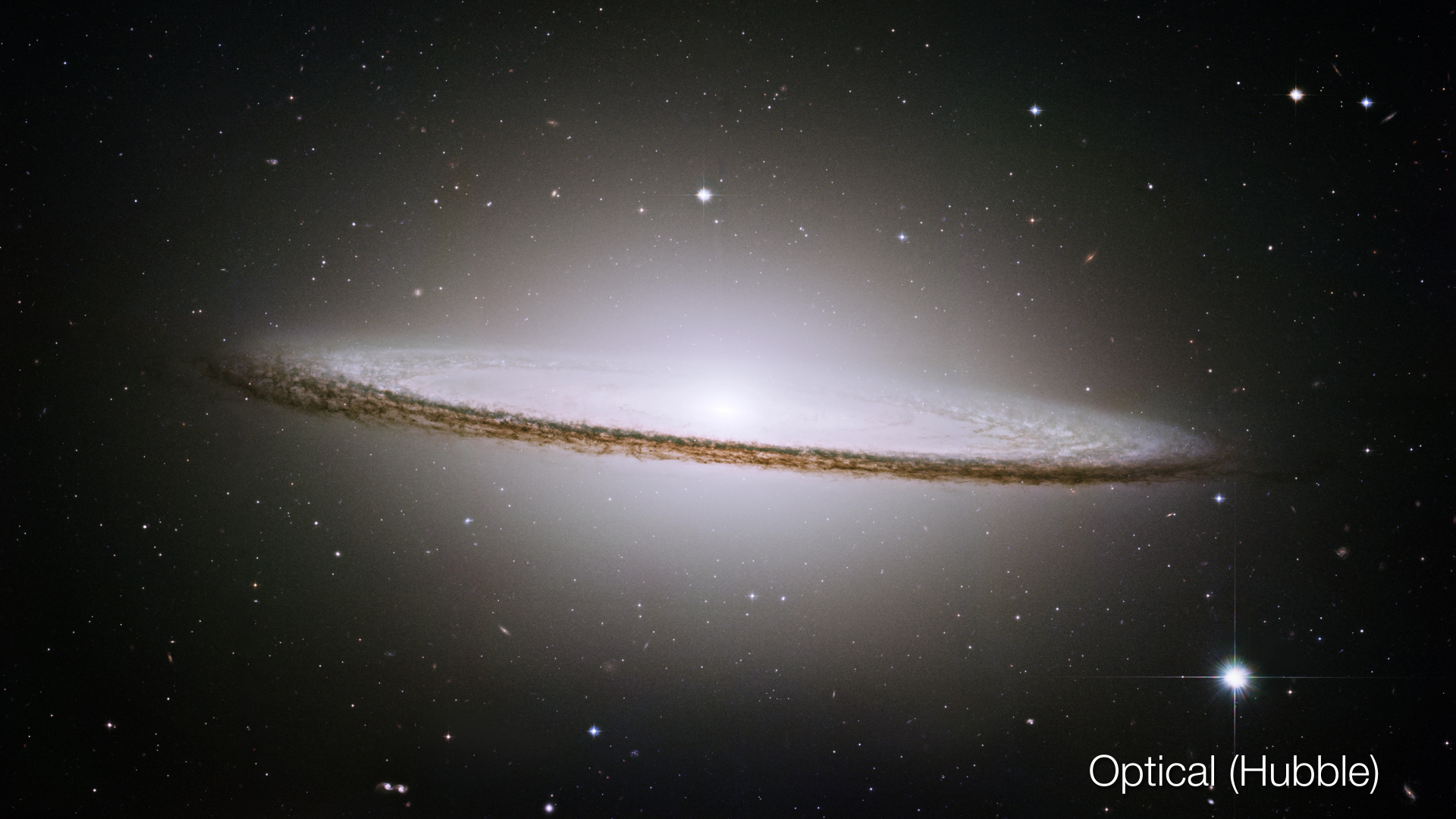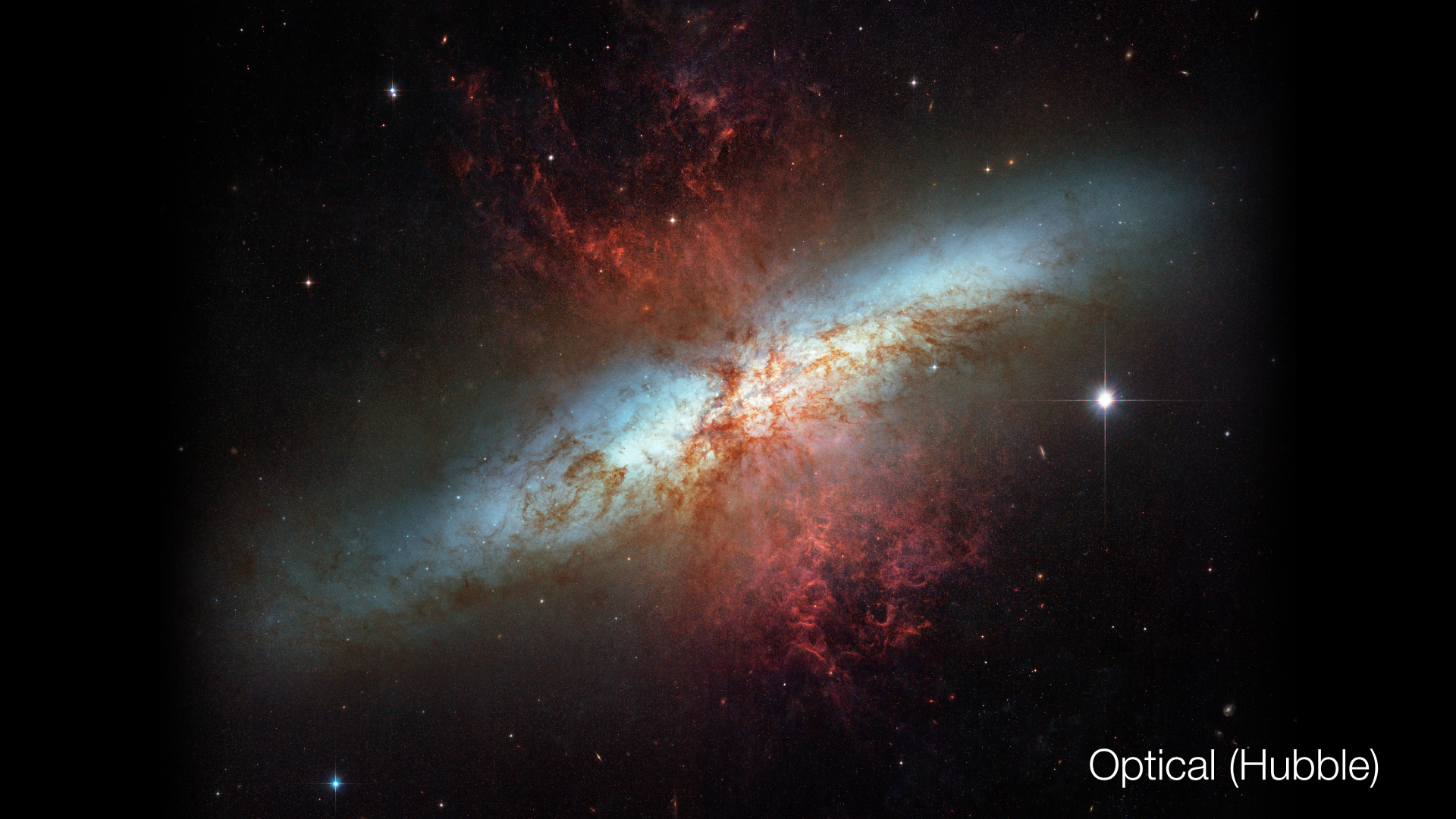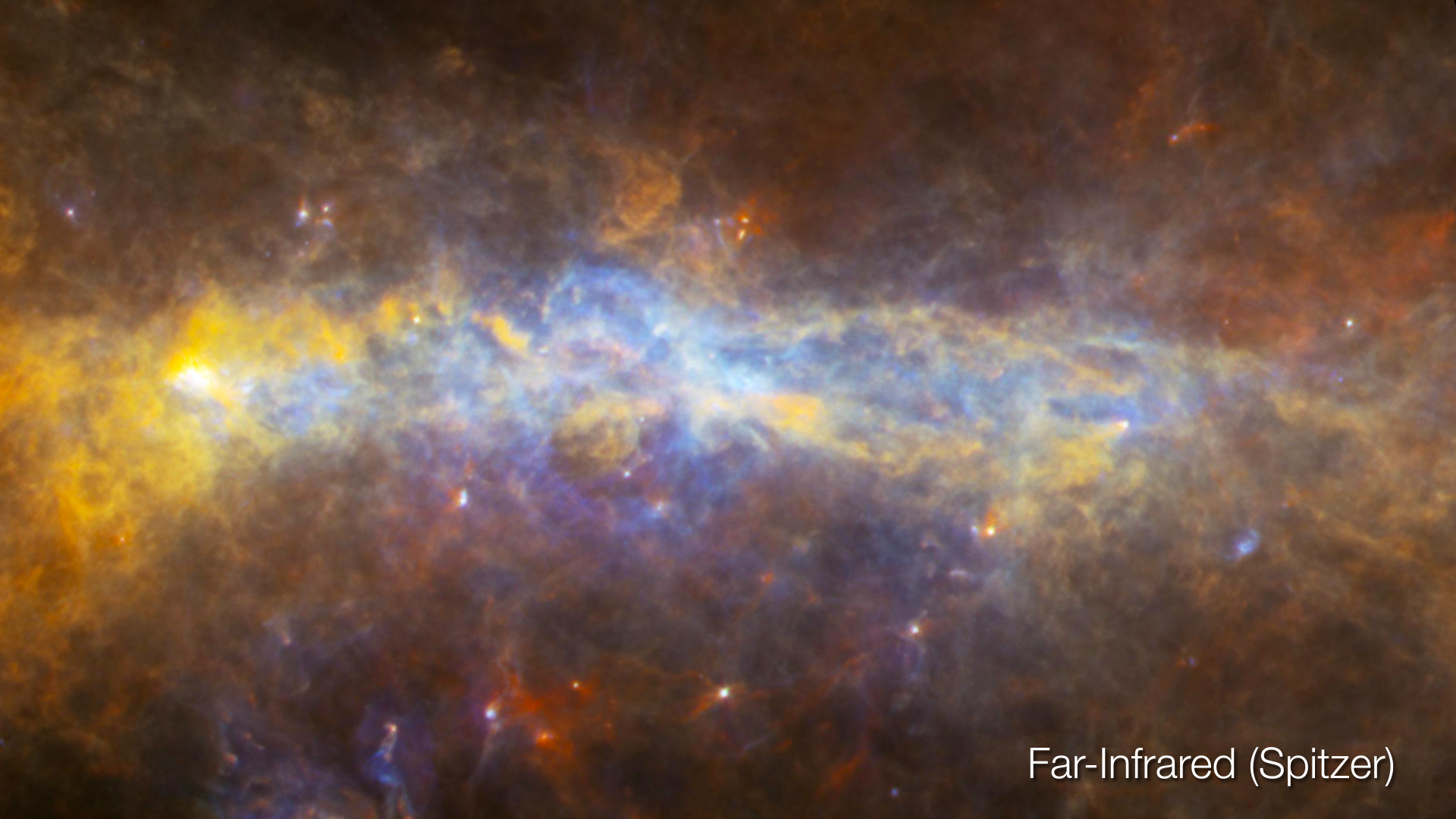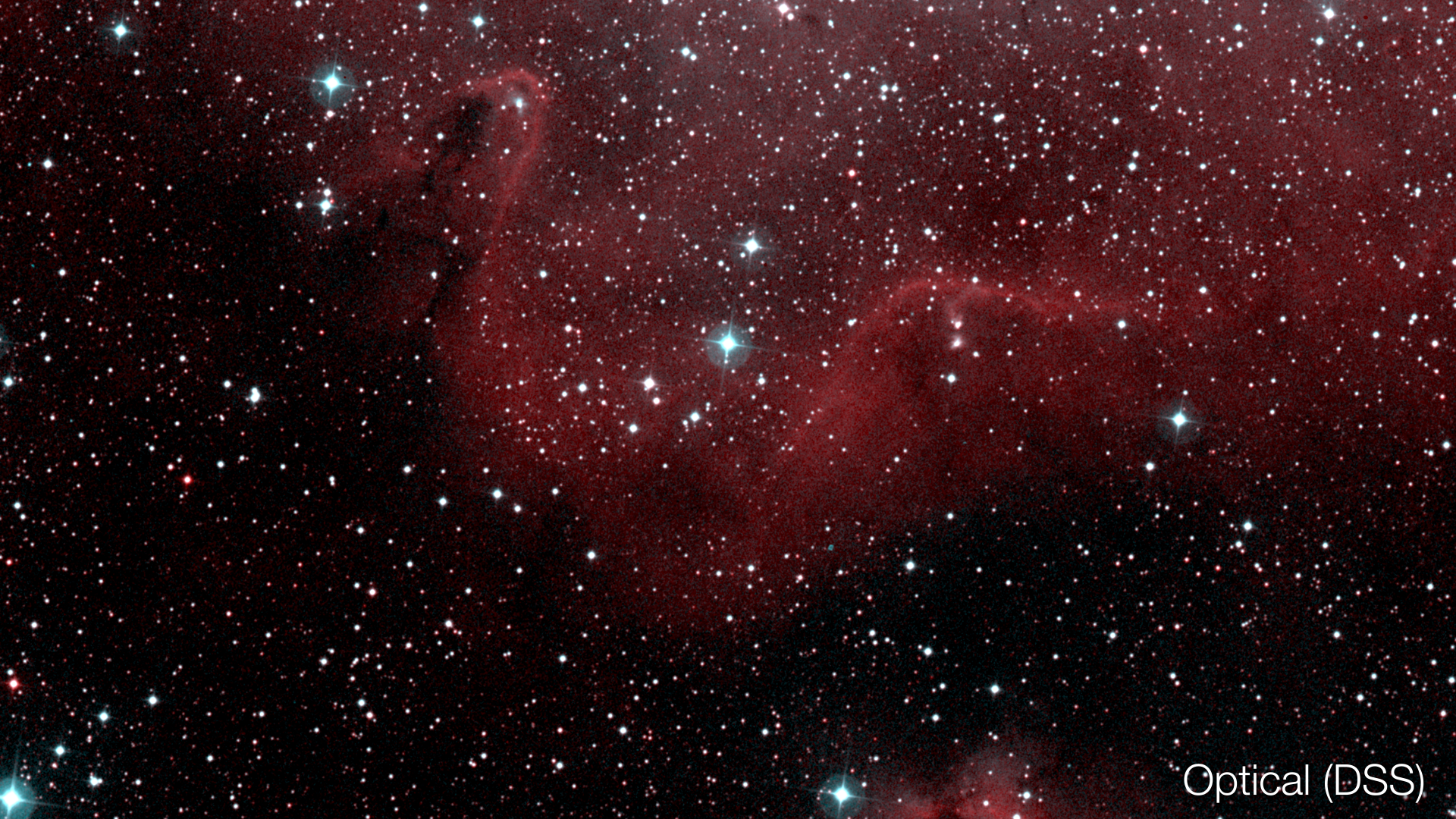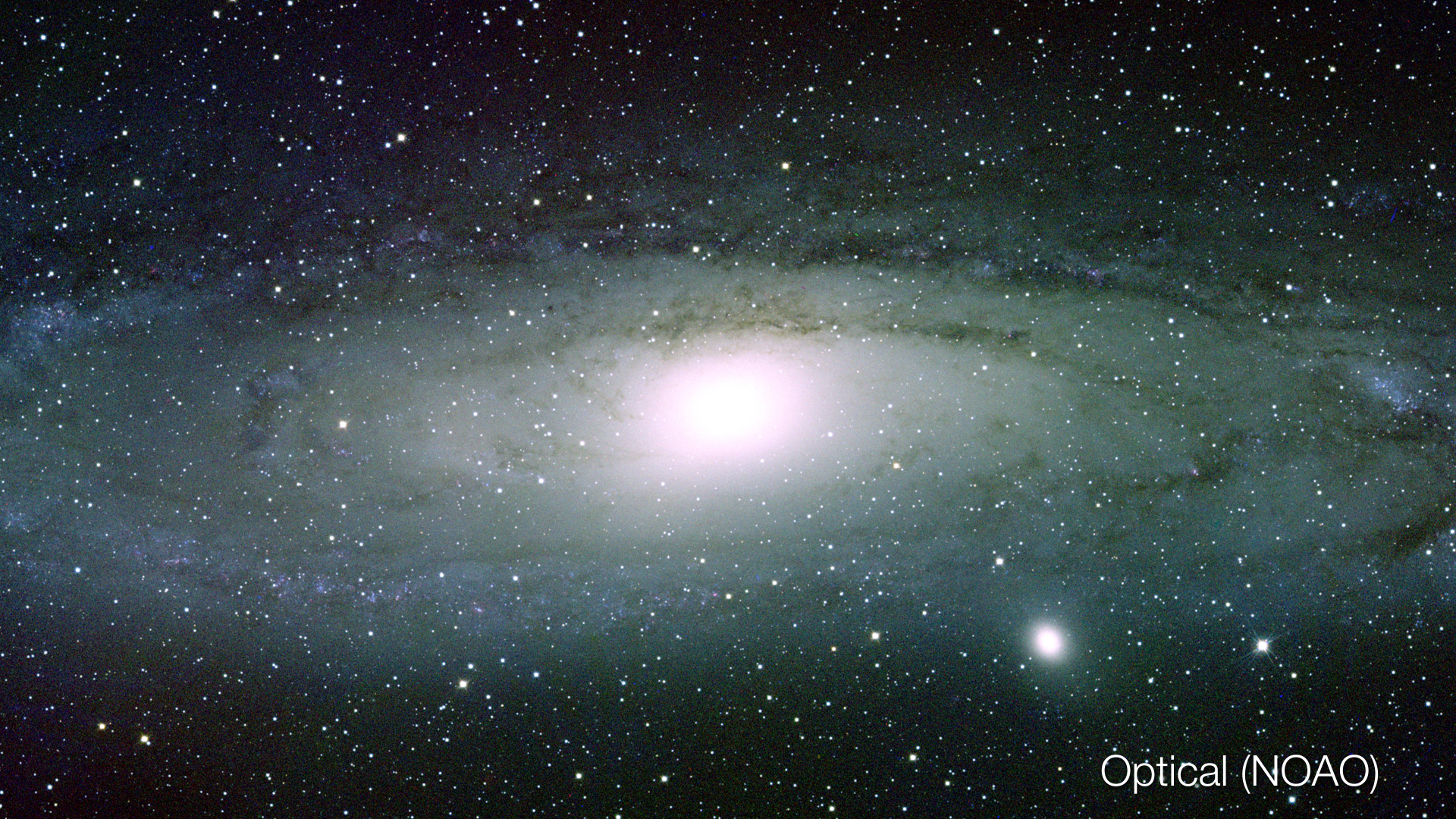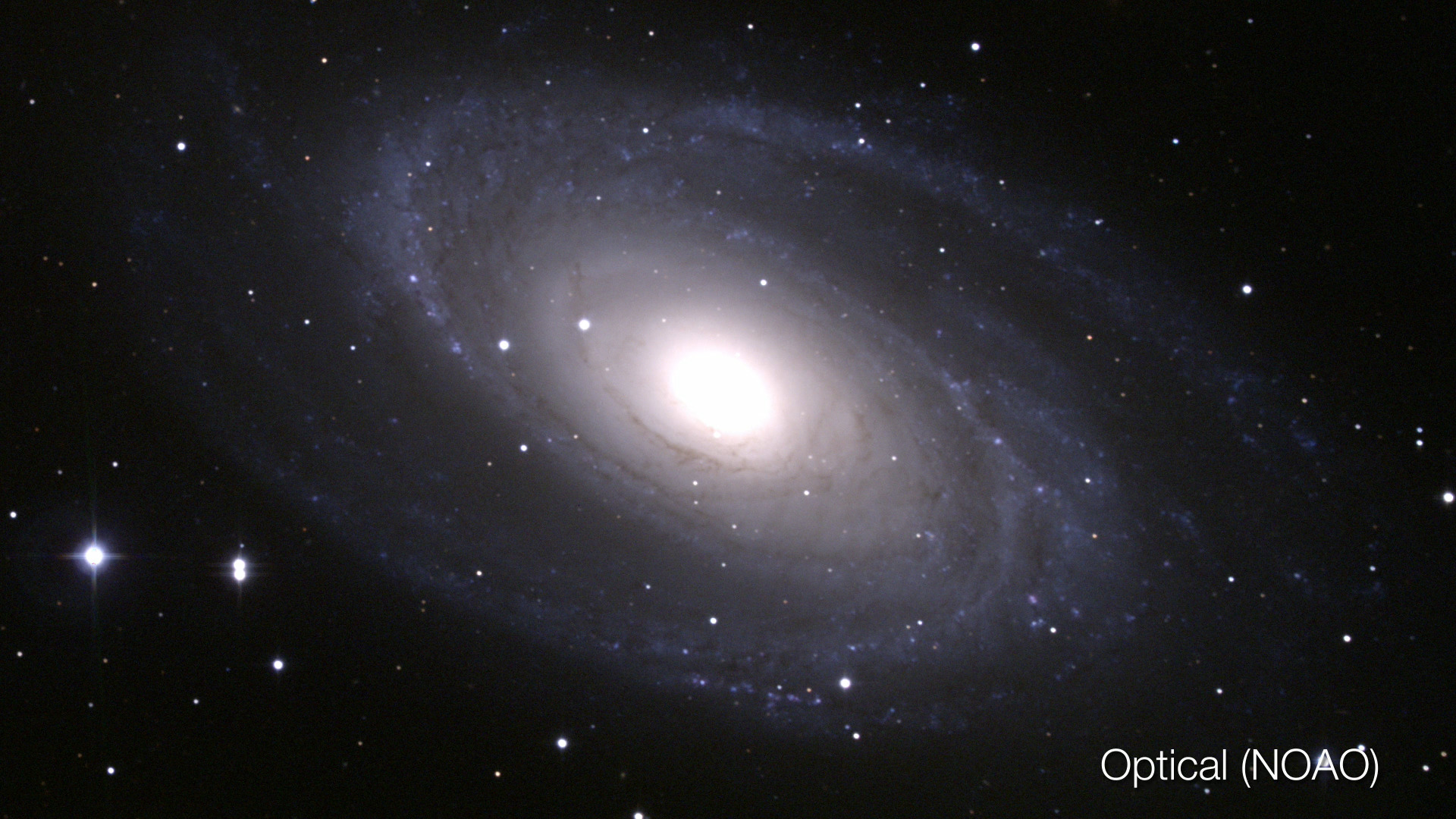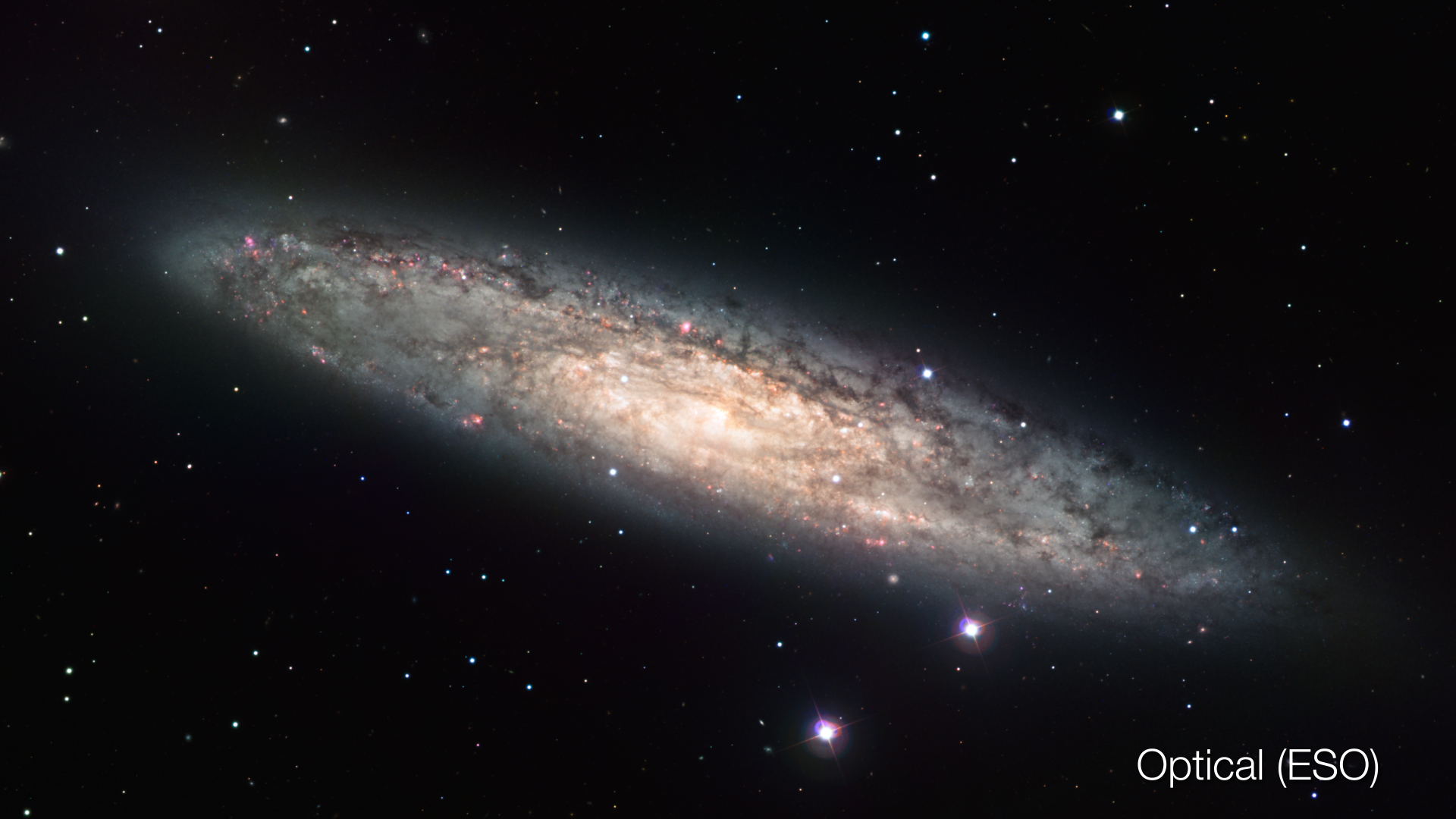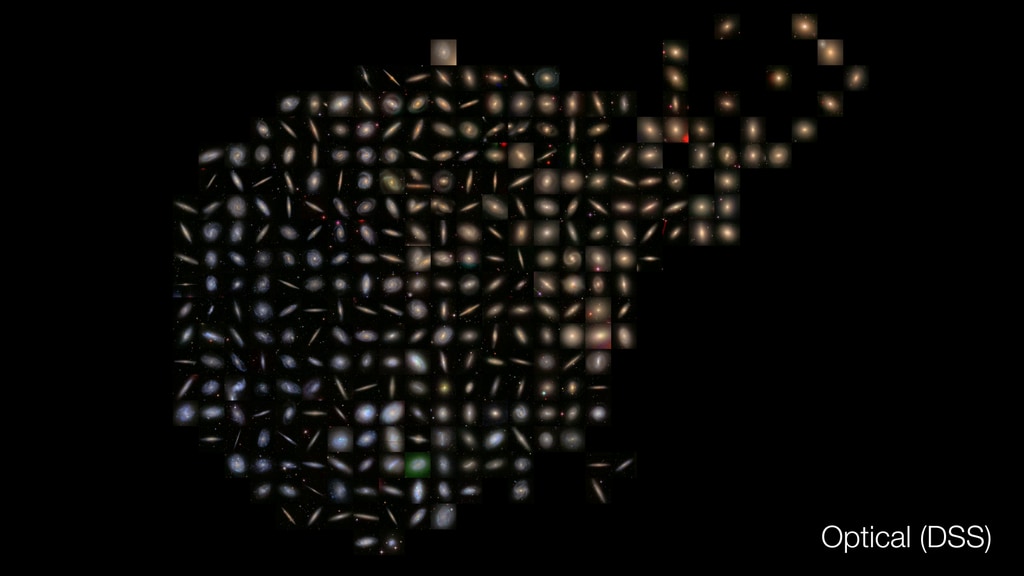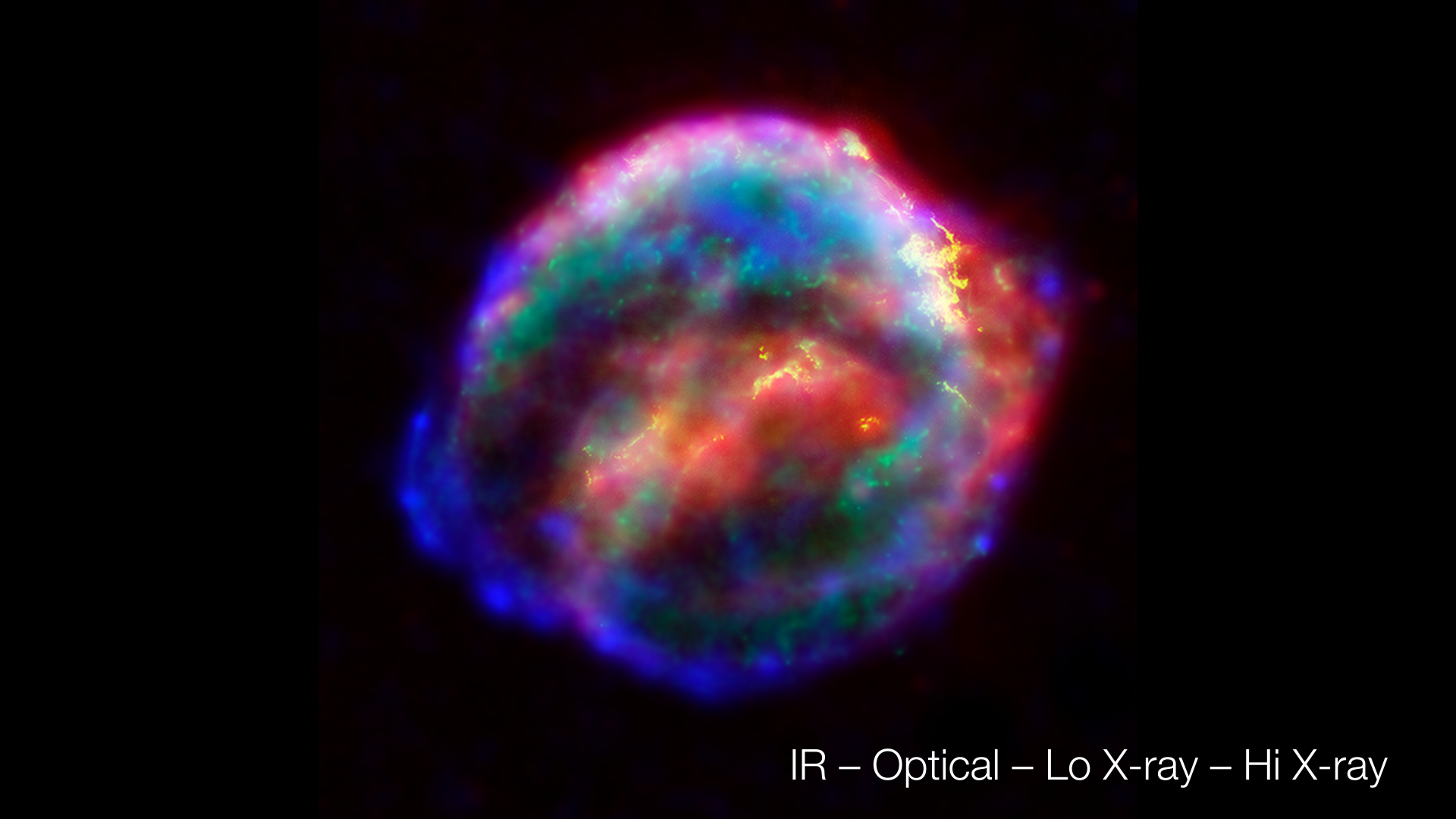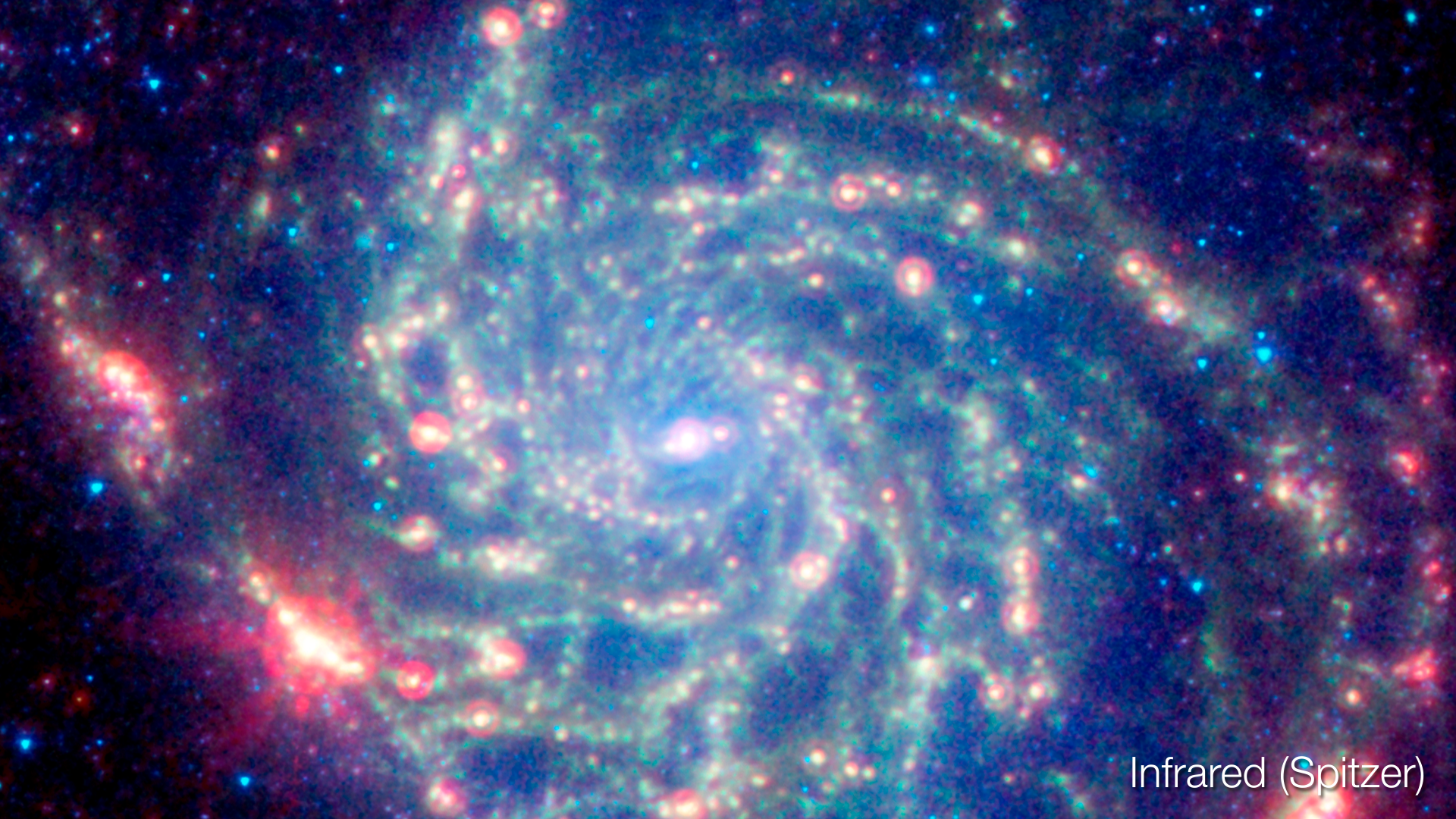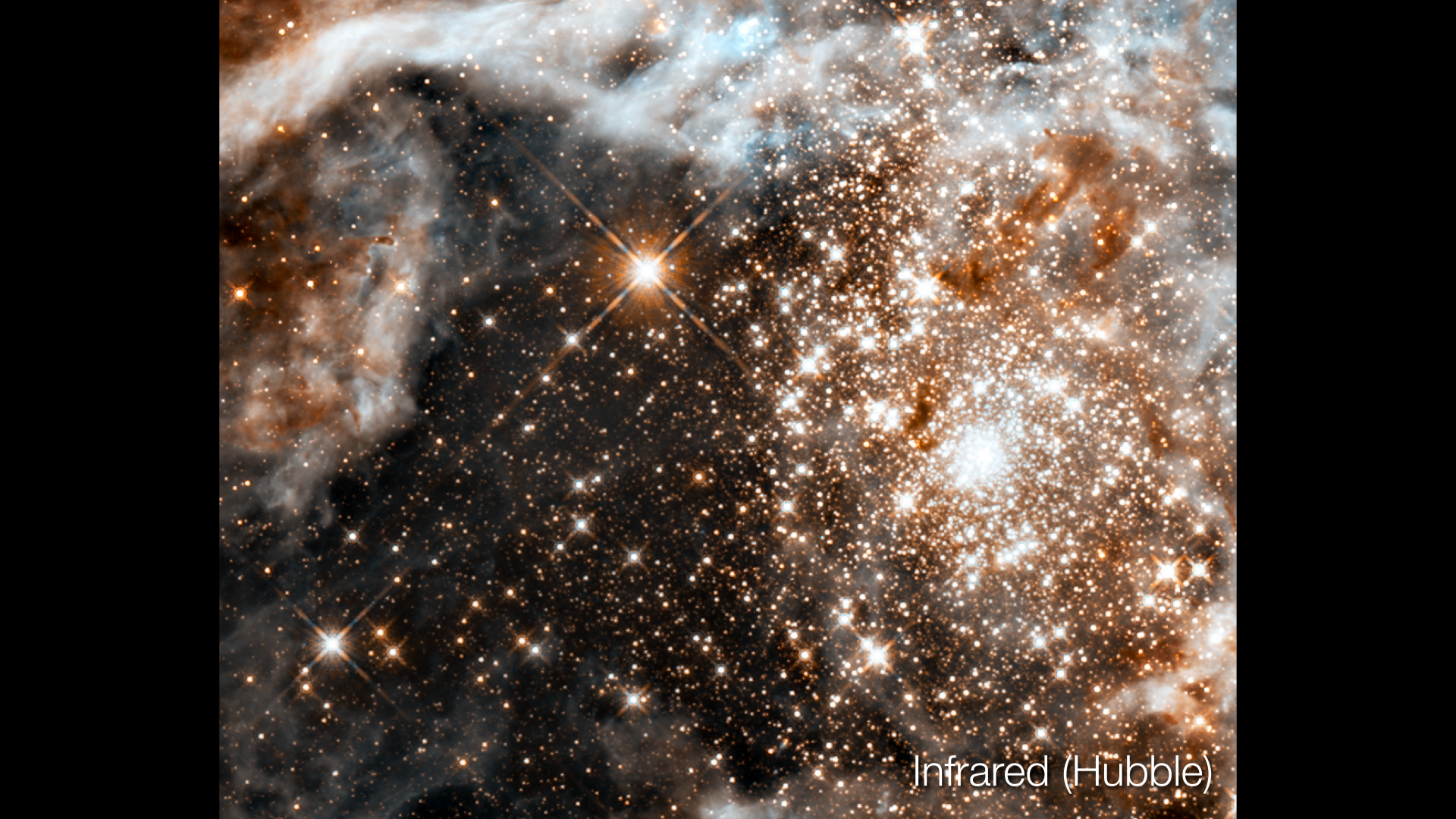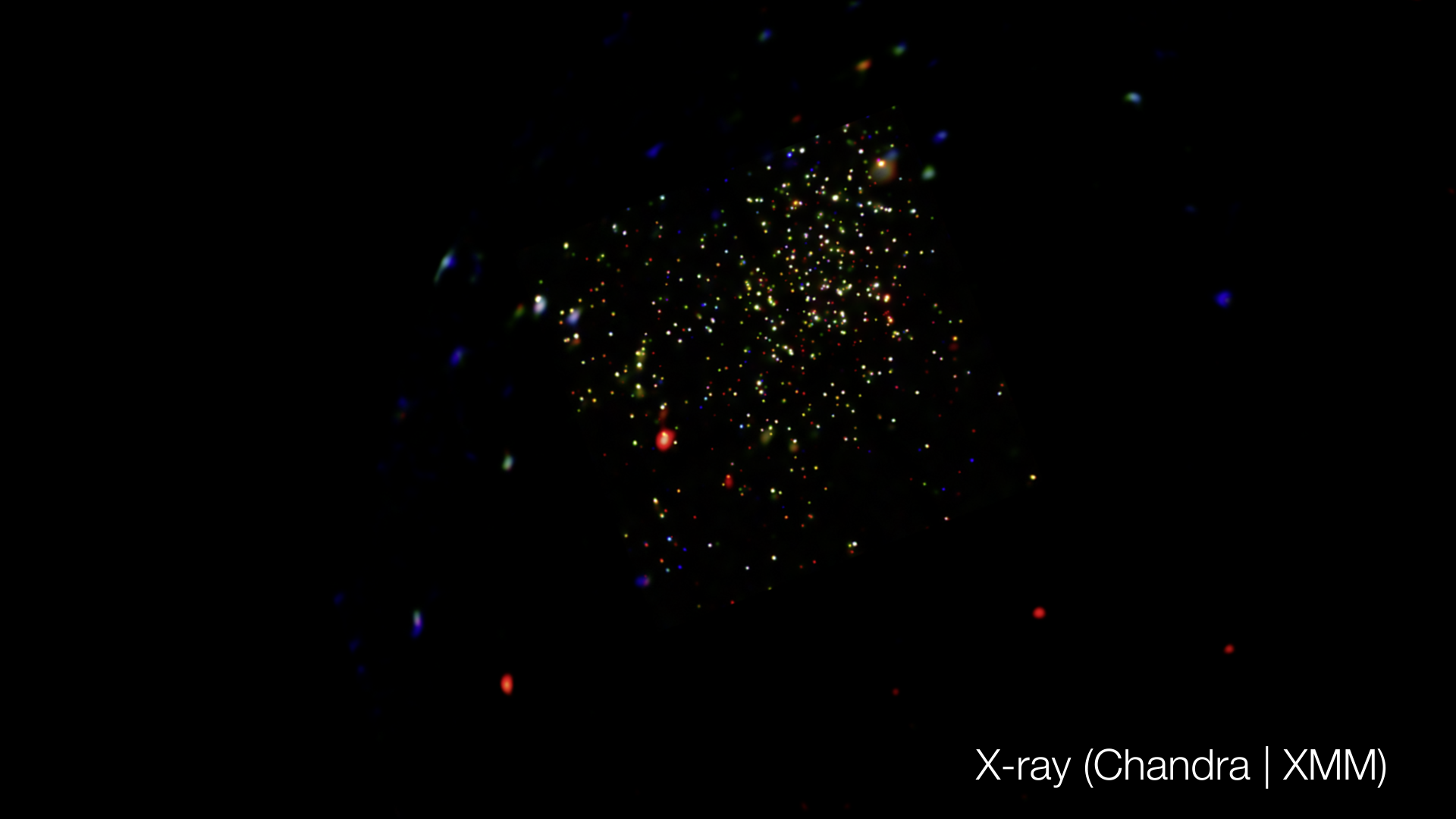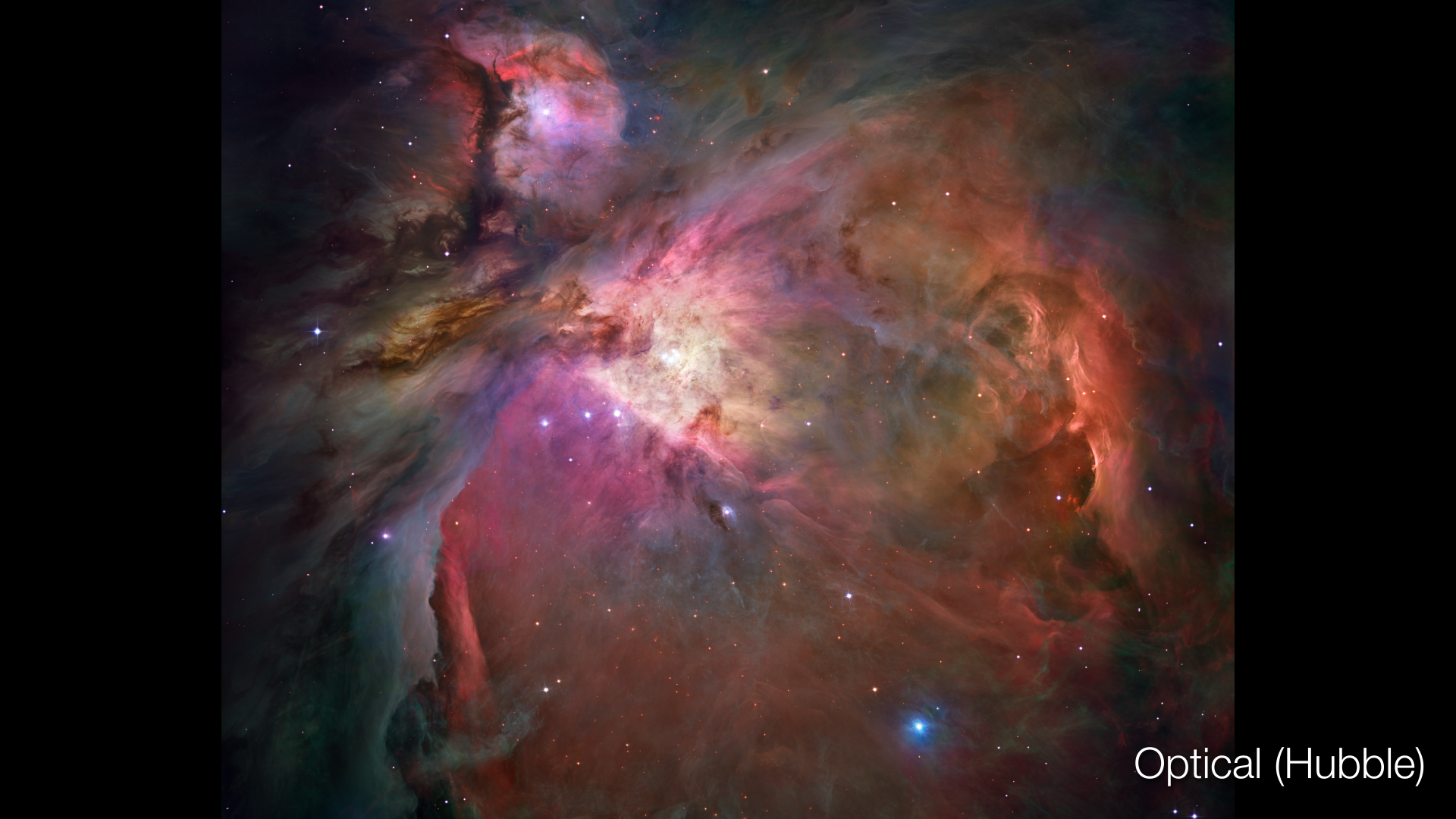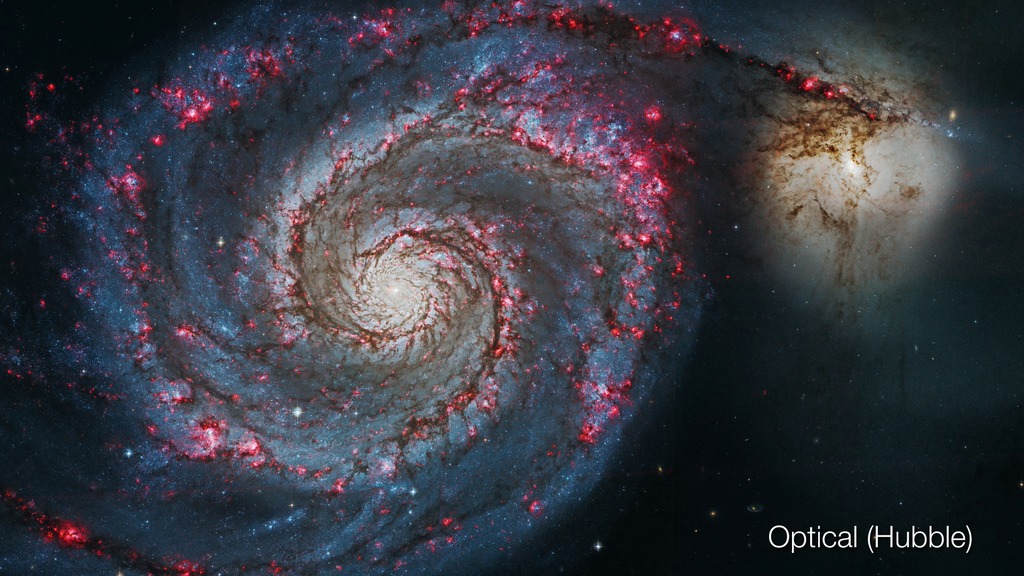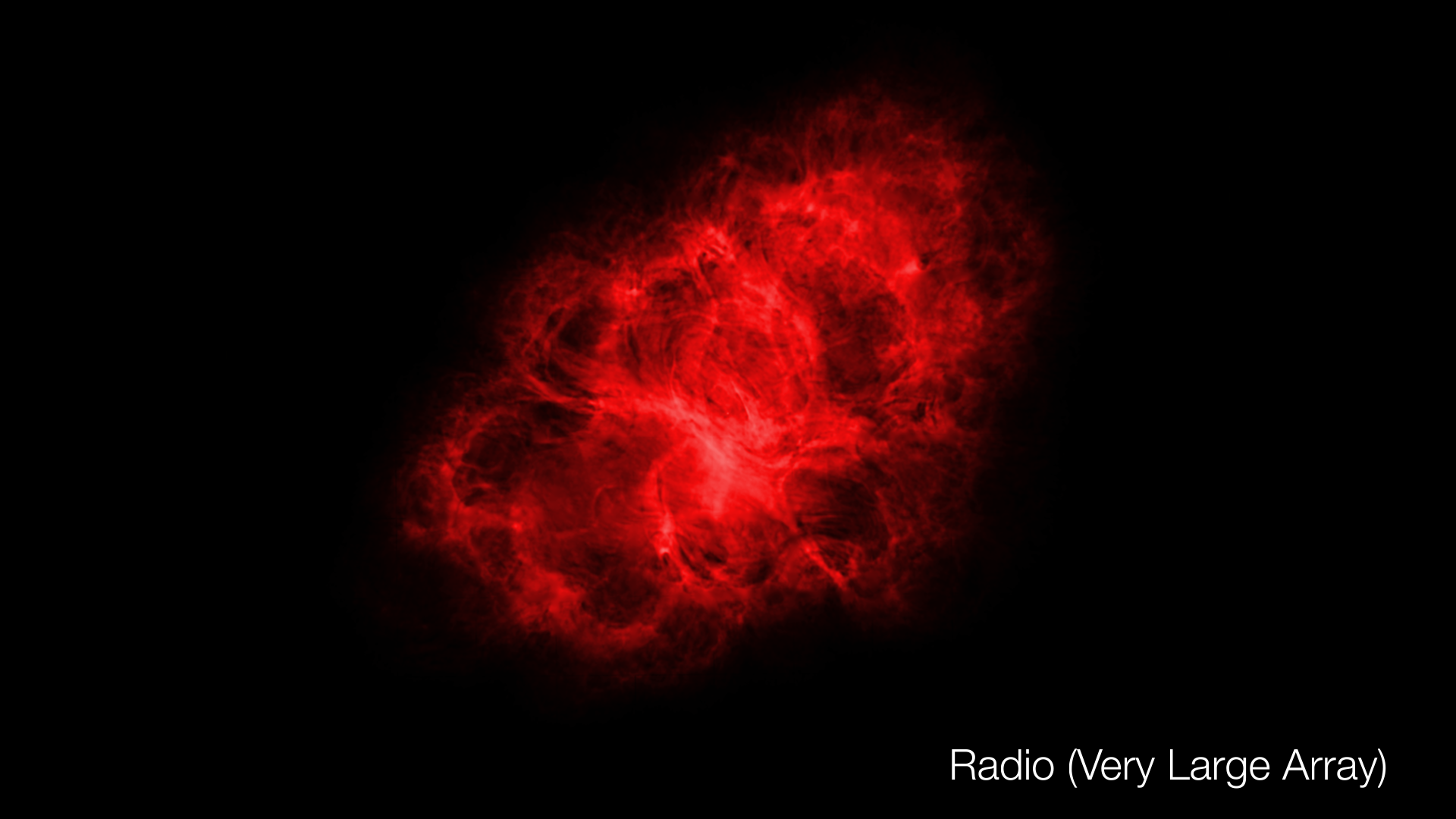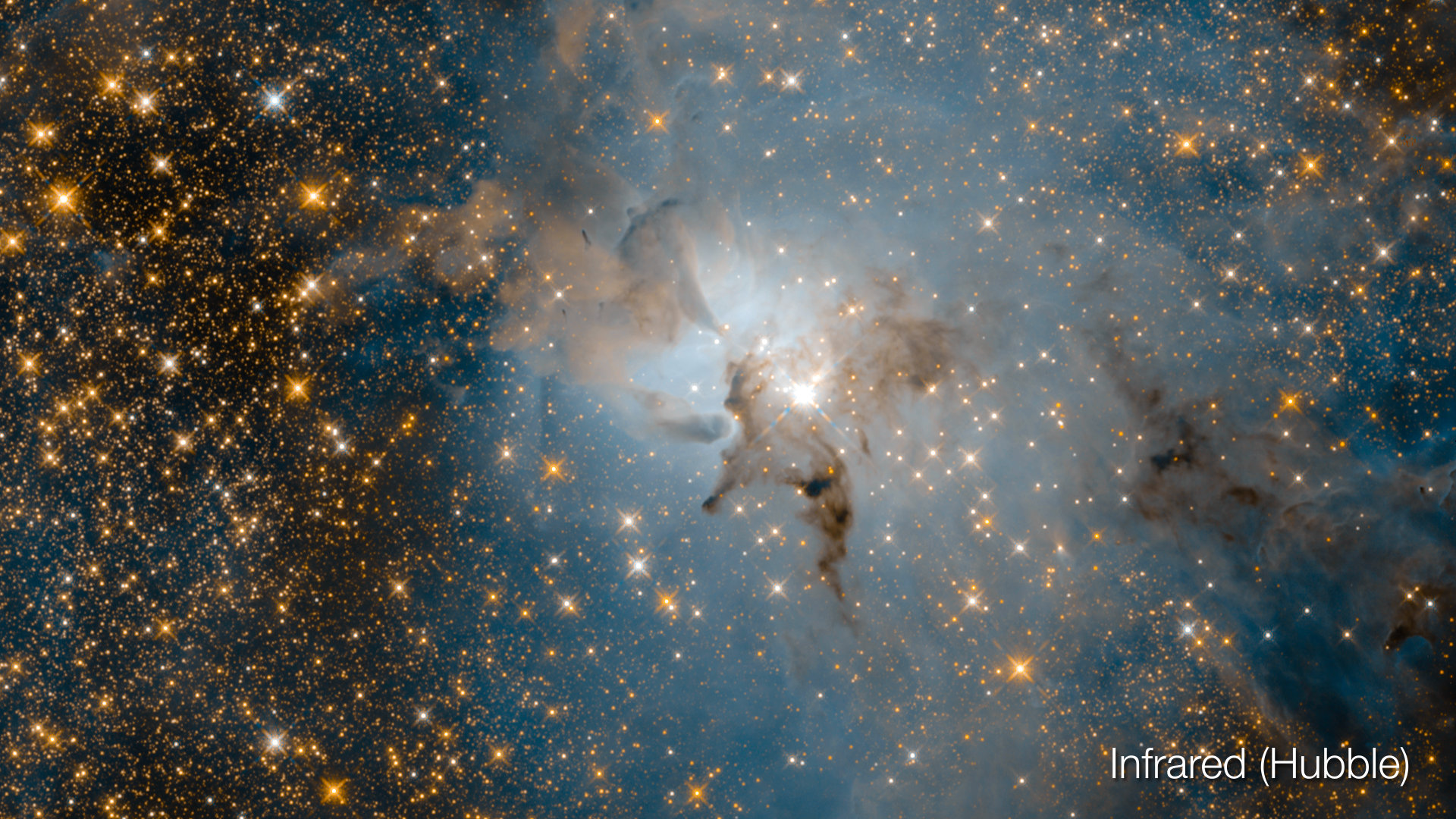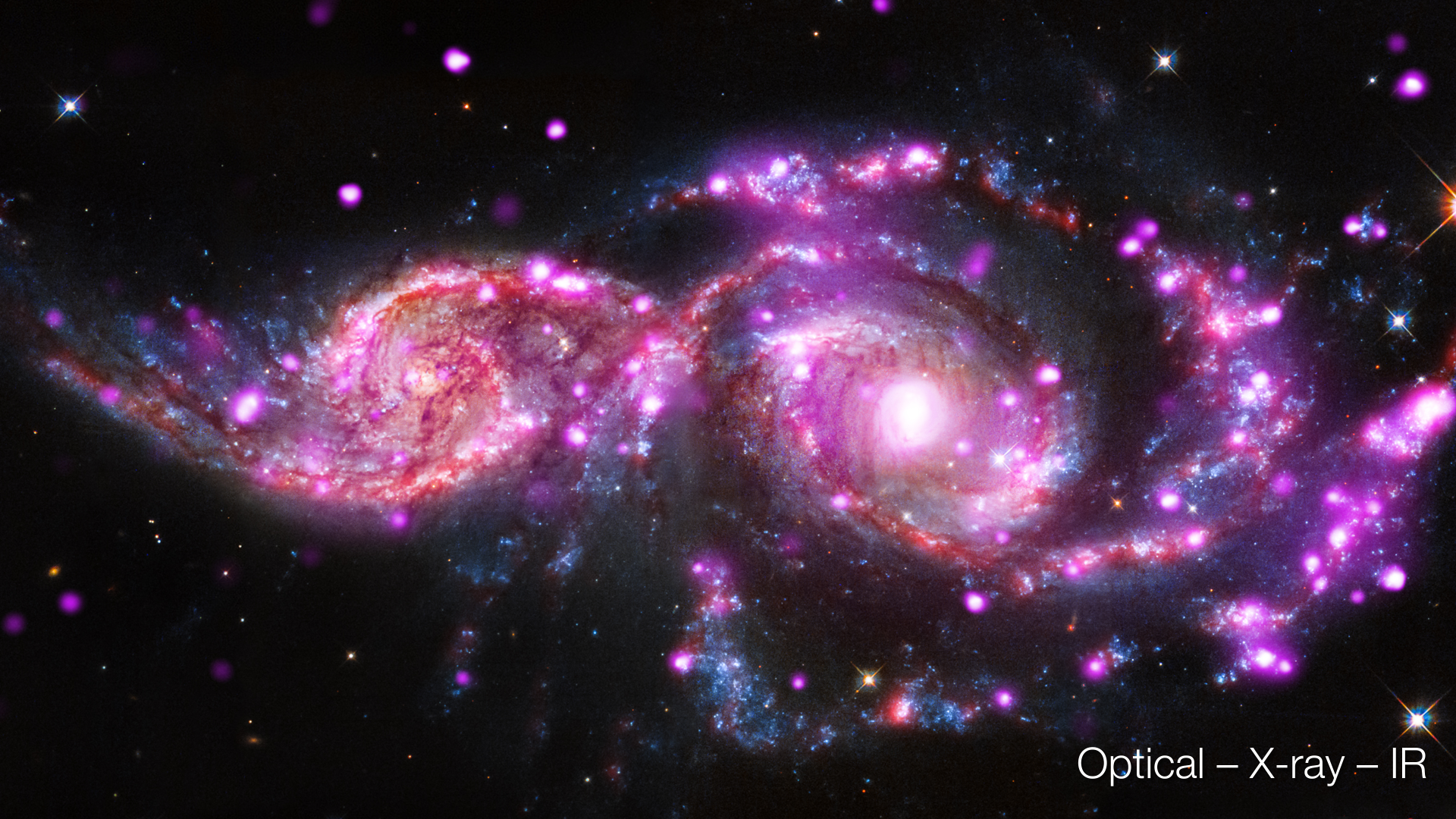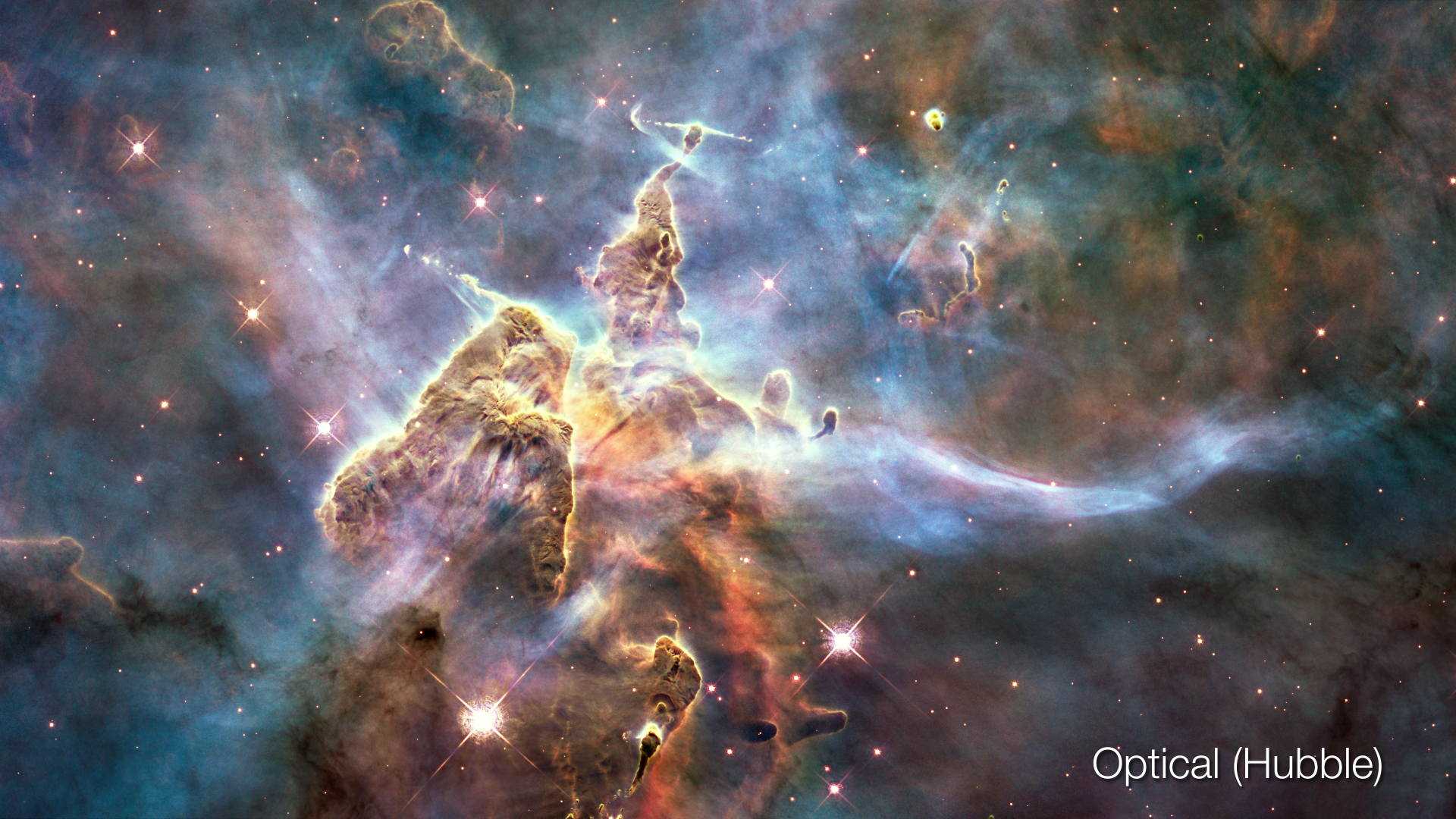Milky Way Center in Multiple Wavelengths
This animation reveals the center of our Milky Way galaxy, first in near-infrared, then mid-infrared, then X-ray light, and then all three in combination.
Our solar system and sun is located inside a pancake shaped galaxy. Imagine a scale model where the plane of the Milky Way is a DVD, and the central bulge is a ping pong ball glued in the center. It is this narrow plane that we see across the sky on a sufficiently dark night from Earth, from our vantage point inside it. Dust blocks much of our view. But at other wavelengths astronomers can probe the heart of our galaxy.
The center of our Milky Way Galaxy, located 26,000 light-years away, houses a black hole as massive as a million suns, surrounded by very dense nest of stars and bright clouds. The density of stars in the innermost regions of the Milky Way is up to one million times greater than in our portion of the galaxy. This region contains extreme and unusual conditions that can influence the types of stars that reside there. The density of stars and clouds creates streaming patterns. There are large massive star clusters that cannot not be found outside that region. The radiation environment is intense in the galactic center.
The near-infrared image (Hubble) shows the knots of cloud edges and emission that mark the plane of our galaxy. The mid-infrared image (Spitzer) highlights the clouds of gas and dust and star forming regions. The X-ray image (Chandra) tracks the most luminous and powerful stars in the area conspicuously revealing the galactic center region itself - including the million-solar mass black hole at the very hub of our galaxy. In addition, several other X-ray emitting locations can be seen, linked to massive star clusters.
This animation is the same as above, played twice as fast.

Spitzer Infrared image of the Milky Way Center

Hubble Near-Infrared image of the Milky Way Center

Chandra X-ray image of the Milky Way Center

Infrared, Near-Infrared and X-ray images of the Milky Way Center
Credits
Please give credit for this item to:
Video: NASA, ESA, and G. Bacon (STScI)
Image Credits: NASA, ESA, CXC, SSC, and STScI
-
Visualizer
- Greg Bacon (STScI)
-
Technical support
- Leann Johnson (Global Science and Technology, Inc.)
Release date
This page was originally published on Monday, June 4, 2018.
This page was last updated on Monday, March 10, 2025 at 12:25 AM EDT.
Missions
This page is related to the following missions:Datasets used
-
[Spitzer Space Telescope]
ID: 690This dataset can be found at: http://www.spitzer.caltech.edu/
See all pages that use this dataset -
[Hubble Space Telescope]
ID: 831 -
[Chandra: Telescope System]
ID: 1002
Note: While we identify the data sets used on this page, we do not store any further details, nor the data sets themselves on our site.
